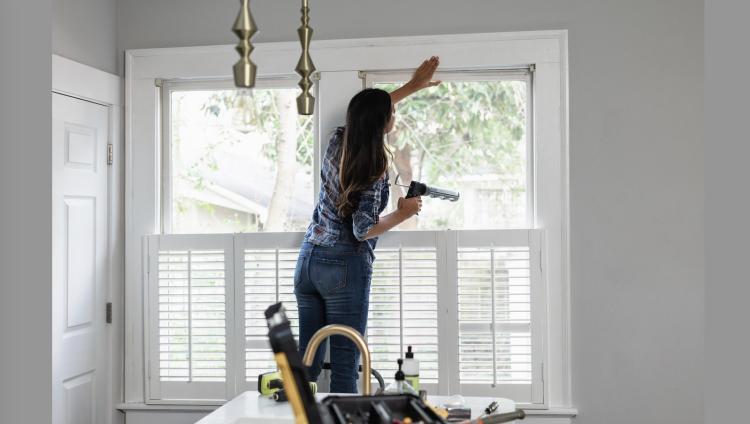Ask the Experts: Should my windows be leaking air?
Gary from North Nashville asks:
I have an efficiency question and figured E3 may be able to help. My wife and I moved into a new house back in September of last year; it's a newer build from 2018 with 2 stories. With this cold weather that has come through, I'm feeling a noticeable draft from the windows but can't tell whether it's coming from the seal around the window or the window openings themselves.
My question is: Do modern windows allow for this type of air circulation in an attempt to provide the home with fresh air or do I need to consider a proper seal for them?
The reason I ask is because it seems like my air units can't keep up with the demand despite the thermostat being set at 68 downstairs and 65 upstairs. I understand this weather event is a bit of an outlier but just wanted to be sure I'm not allowing unnecessary money to go out the window, literally! Any advice you have would be much appreciated!
Thanks for the question, Gary!
There should not be a significant draft happening around windows, especially in a newer home. Windows should seal completely and are not designed to provide natural ventilation, unless you intentionally open them. It sounds like your windows are leaky.
There are a few things you can try:
- Make sure all windows are closed completely and locked, which will produce the tightest seal.
- Use the smoke from a stick of incense to see if there is air movement around the window and which way the smoke moves (in or out).
- If a window is not sealing in its frame and you can see the smoke moving, you can apply weather stripping.
- If you see small gaps between the window and the sill, use caulk to seal them up. This should have been done during construction, but small cracks can form over time.
- To improve the efficiency of the window, plastic window coverings can be added temporarily for the season. These coverings will block air leaks and reduce the heat loss through the window, improving comfort.
- Air sealing the attic will reduce the stack effect and the amount of cold outdoor air that gets pulled in through leaky windows. This is a an excellent energy efficiency strategy that can improve the overall performance of the house when done as a wholistic measure.
Curious about window performance? Read on…
Air leakage can happen when a window doesn’t fit snug into the frame. This is often felt around double and single hung windows. If you have double hung windows (where the top sash opens downward in addition to the bottom sash sliding up) you may notice the top sash sliding down over time, leaving an air gap at the top of the window. This can happen because the sash is fighting gravity. Make sure the top sash is locked tightly into place.
Another phenomenon that can add to the discomfort around windows is the conductive and convective heat transfer happening through and around the glass and frame. There is some amount of heat that will transfer directly through the glass and the frame (conduction), which causes the air around the window to cool. As this air mixes with the space around the window (convection), you may be able to feel subtle air movement.
The amount of conduction that happens through the window is dependent on the thermal property of the window, or U-factor. The U-factor is simply the thermal rating of the window. An energy efficient window will have a U-factor of 0.3-0.2. The lower the number, the more efficient the window.
Unsealed rough openings of the window in the frame behind drywall can also make windows feel colder because of the heat transfer happening through the wall in those uninsulated area. Unfortunately, there’s nothing you can do to seal these areas after construction unless you take the drywall down. That’s why testing a home’s air leakage rate is important during a pre-drywall inspection!
Believe it or not, air sealing the attic can reduce the amount of infiltration happening through windows. When the attic has unsealed penetrations, warm air rises through these cracks and eventually out of the house. As the warm air moves up and out, cold air from the outside must move in to take its place. If the windows are leaky, air will get sucked in through these areas. This is known as the stack effect.
When the attic is tight and air sealed, it blocks air from escaping through the top of the house, which then stops air from getting pulled in through other leaky areas.
Remember, insulation is NOT an air seal. Your attic may be well insulated, but if it is not air sealed, you could still be losing a lot of hot air. That is why it is important to air seal the attic first with caulk before applying a tradition insulation product, like blown cellulose. Air sealing is a detail that is often missed in construction. Luckily, air sealing can be done post construction as an energy efficiency upgrade. And, E3 INNOVATE can help!
To find out how to improve the energy efficiency of your home, call us to learn more about our Whole Home Diagnostic Assessment!

